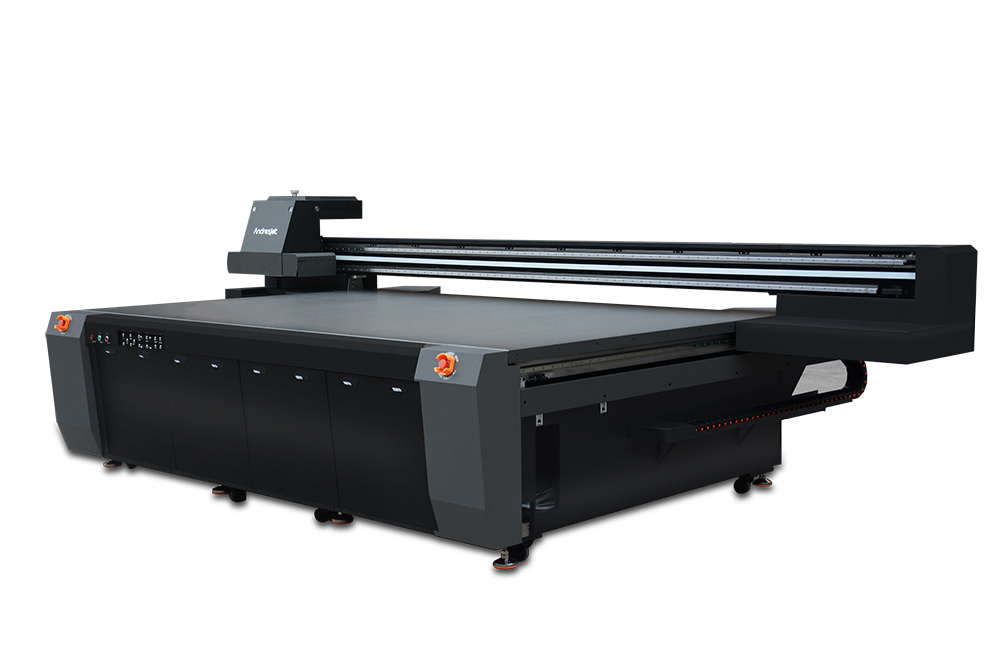How to Optimize Print Quality on a UV Flatbed Printer?
How to Optimize Print Quality on a UV Flatbed Printer?
UV flatbed printers have revolutionized the printing industry, offering unparalleled versatility and precision in reproducing images and designs on various materials. From rigid substrates like glass, metal, and plastic to flexible ones such as leather and fabric, these printers deliver exceptional results. However, achieving optimal print quality on a UV flatbed printer requires a meticulous approach, encompassing several key factors. This article delves into the strategies and techniques for enhancing print quality on UV flatbed printers, ensuring vibrant, detailed, and durable prints.

1. Understanding UV Flatbed Printer Technology
UV flatbed printers utilize ultraviolet (UV) curing technology, where ink is instantly dried or cured by UV light after it is applied to the material. This process allows for immediate fixing of the ink, preventing smudging or bleeding, and enabling printing on non-porous surfaces. The printer’s flatbed design facilitates easy loading and unloading of materials, accommodating various sizes and thicknesses.
2. Pre-Print Preparation
Pre-print preparation is crucial for achieving high-quality prints. Here are some essential steps:
Material Selection: Choose materials compatible with UV inks. Ensure they are clean, dry, and free from dust, oils, or any contaminants that could affect ink adhesion.
File Preparation: Use high-resolution images (at least 300 DPI) to ensure sharpness and clarity. Convert colors to the printer’s color profile to maintain color accuracy.
Printer Calibration: Regularly calibrate your printer to ensure consistent color output. This involves adjusting color profiles, ink densities, and printhead alignments.
3. Ink and Ink Management
UV inks are specifically designed for flatbed printers, offering excellent adhesion, durability, and resistance to fading. Here’s how to manage them effectively:
Ink Quality: Use premium UV inks recommended by the printer manufacturer. Low-quality inks can lead to poor color saturation, increased drying time, and reduced print lifespan.
Ink Levels: Monitor ink levels regularly to avoid running out during a print job, which can cause color shifts or print failures.
Ink Circulation: Some printers have ink circulation systems to maintain ink consistency. Ensure this system is functioning correctly to prevent ink settling or drying in the lines.
4. Print Settings and Parameters
Optimizing print settings is vital for achieving the desired print quality. Consider the following adjustments:
Resolution: Adjust the print resolution based on the material and the desired outcome. Higher resolutions are ideal for detailed graphics but may increase print time.
Ink Density: Balance ink density for optimal color saturation and ink curing. Excessive ink can lead to pooling or slow curing, while too little can result in faded colors.
Curing Temperature: UV lamps cure the ink; adjust the lamp intensity and conveyor speed for proper curing. Incorrect settings can cause ink to remain tacky or overheat the material.
5. Print Bed and Material Handling
Proper handling of the print bed and materials ensures consistent print quality:
Bed Leveling: Ensure the print bed is level and secure to prevent material movement during printing, which can cause banding or misalignment.
Material Positioning: Accurately position materials on the print bed to avoid printing errors or ink wastage. Use fiducial markers for precise alignment.
Temperature Control: Maintain a stable ambient temperature in the printing environment to prevent ink viscosity changes that can affect print quality.
6. Post-Print Care and Handling
Post-print care is essential for preserving print quality and ensuring ink properly cures:
Curing Time: Allow sufficient time for the ink to fully cure after printing, especially for thicker inks or larger prints.
Handling Instructions: Provide clients with handling instructions, advising them to avoid exposing prints to extreme temperatures or chemicals that could degrade the ink.
Storage Conditions: Store printed materials in a cool, dry place away from direct sunlight to maintain color vibrancy and print integrity.
7. Regular Maintenance and Upgrades
Regular maintenance keeps your printer operating at peak performance:
Cleaning: Regularly clean the printhead, ink lines, and print bed to prevent dust, ink residue, and debris accumulation.
Firmware Updates: Install firmware updates provided by the manufacturer to access new features, improve print quality, and fix any known issues.
Professional Servicing: Schedule periodic professional servicing to inspect and replace worn components, ensuring optimal printer functionality.
Conclusion
Achieving optimal print quality on a UV flatbed printer is a multifaceted process that requires attention to detail at every stage. From selecting the right materials and inks to calibrating the printer and managing print settings, each step contributes to the overall print outcome. Regular maintenance and adherence to post-print care instructions further enhance print durability and customer satisfaction. By implementing these strategies, you can harness the full potential of your UV flatbed printer, producing vibrant, high-resolution prints that meet or exceed client expectations.
